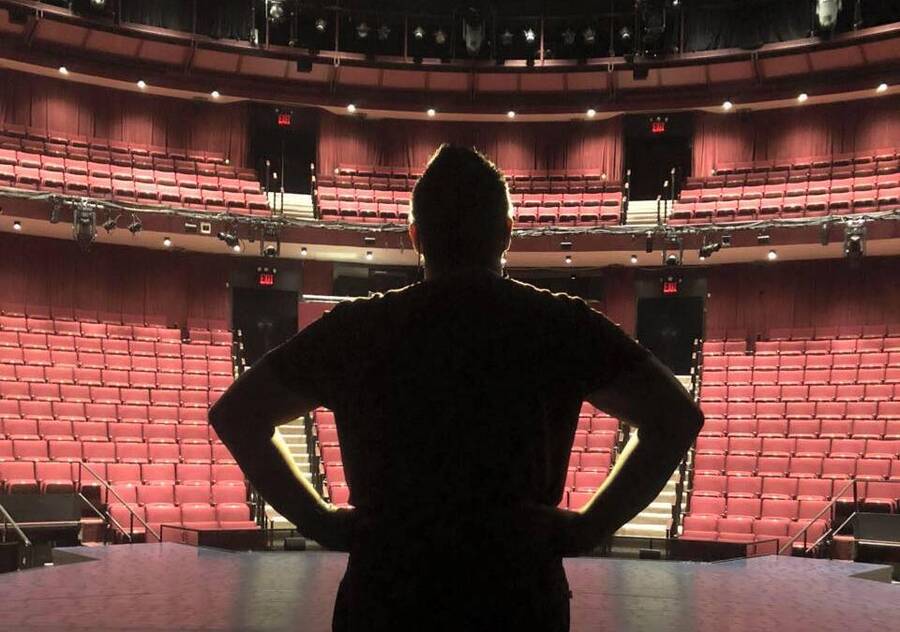It’s one of the great romantic moments in the history of the movies: A stiletto heel emerges from a New York City taxi to reveal Cher, eyes wide, in front of the Revson Fountain at Lincoln Center, as she searches the crowd for a tuxedo-clad Nicolas Cage, who has invited her to the Metropolitan Opera. It is through scenes like this, in the 1987 film Moonstruck, that millions of people around the world have become acquainted with the iconic Lincoln Center, home of the Metropolitan Opera, the New York City Ballet, the New York Philharmonic, the Juilliard School, and sometimes the Big Apple Circus.
I like to think the three weeks in July 2014 that I spent at Lincoln Center were equally as romantic as Cher’s big night out. That was the time I was a member of the Lincoln Center Theater Directors Lab, then in its 20th year. I was one of 76 directors from 40 countries. We met six days a week, 10 a.m. to 10 p.m., to investigate in every imaginable way the role of the director. Each day brought passion, drama, discourse, and celebration. Whatever we didn’t resolve in those 12 hours was further investigated at local bars, until we had to pick ourselves up and get ready for another 12 hours at Lincoln Center.
The first Directors Lab took place in the summer of 1995 and was held annually until the program halted operations in 2019 (LCT has said that they intend to continue the Lab in some form). In its 25 years, the Lab welcomed more than 1,600 directors through its doors. It was an enormously popular, productive, and competitive program, and one that will be sorely missed by its alumni, and, if it is not revived, missed-out-upon by thousands of artists worldwide in years to come.
Playwright, director, and 2005 Lab participant Mike Lew credits the program’s founder, LCT’s longtime and now former dramaturg, Anne Cattaneo, for her “singular vision, which tied together directing and dramaturgy, freelance vs. institutional work, and had an international bent.” The end of Cattaneo’s version of the Lab is “not just losing a résumé line for young directors,” he added. “It’s losing a lifeline and mentorship chain. I truly lament that.”
But the theatre, and drama itself, is an inherently active medium. So rather than eulogize what was, we can now take a moment to appreciate the successes of such a program and examine the elements that might one day fuel even more opportunities for artists.
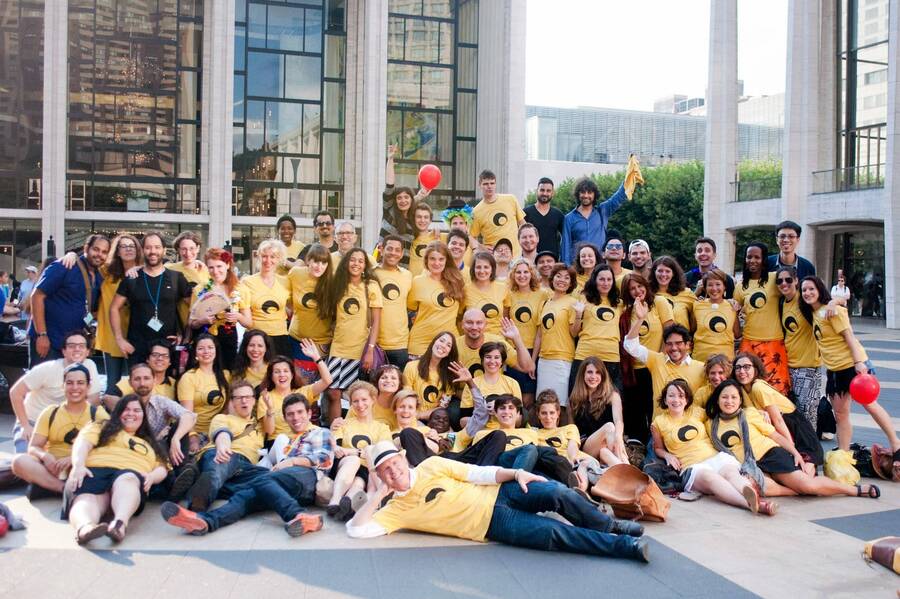
Anyone who knows Anne Cattaneo would agree that she is one of the great theatre minds of our time. Her work at Lincoln Center Theater was far-reaching, and it all fell under the umbrella of play advocacy and accessibility for both artist and audience. In her 34-year tenure there, Anne’s responsibilities ranged from reading plays and advocating for what to produce on the LCT stages to aiding productions by providing valuable background research on a particular text. In addition, she was co-editor of the Lincoln Center Theater Review, published in conjunction with specific productions, offering audiences unique and invaluable insight into the world of the play and the process of creating it.
In 1992 André Bishop became the artistic director and Bernard Gersten the executive director of Lincoln Center Theater, beginning an era of rigorous attention to new work. At that time, most new plays weren’t exactly “new.” Most of LCT’s play submissions came directly from agents, and had either had previous readings or had already undergone a developmental process. Competition for hot plays was fierce, and Anne was always aware that plays passing through a dramaturg’s or literary manager’s office were often encountering a gatekeeper with “too much influence and too singular a vision of what constitutes a good play.”
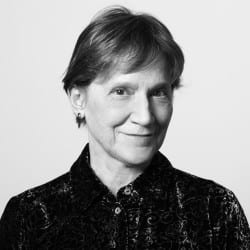
Her solution to this logjam was inspired: As she explains in her book The Art of Dramaturgy (Yale University Press, 2021), “My instinct is always to let a thousand flowers bloom. A gathering of directors with many different ideas and playwright collaborators they could bring with them could address this issue.”
Anne’s intention from the start was to create an environment that was far from academic—one in which artists could thrive together simply by being in the company of one another. As she put it in her book: “The second generation of Abstract Expressionist artists who drank at the Cedar Tavern in the 1940s occurred because of actual personal contact. In other words: a scene. We needed to create a scene.”
The first year gathered 95 directors, largely U.S. citizens or residents and most living in the New York area, for “seminars, symposia, discussions, and active work on daily projects alongside leading theatre artists.” It was meant to be flexible and adaptable, as Anne and the participants homed in on what they wanted to explore. A company of six actors was brought on to develop new works by six emerging playwrights. Eventually, designers would be brought in, as John Conklin advised, not to design but to be in the room as thinkers to develop ideas with directors.
The following year a new class was assembled from a combination of first year participants and new directors. With a goal of producing as much new work as possible, 24 pieces (readings, workshops, modest productions) were presented on the Lincoln Center campus as well as uptown at the 78th Street Theater Lab and downtown at HERE Arts Center.
In the ensuing years, the Lab’s evolution was shaped by the goals and interests of its participants, which they explained in a lengthy written application. Though new work would continue to be presented, the program shifted into a group exploration of a given subject or play. In 2000, the Lab’s sixth year, directors, actors, and designers investigated Shakespeare’s A Midsummer Night’s Dream; in 2011, Strindberg’s A Dream Play. Other themes included “Political Theatre” (2003), “The Comedy Lab” (2012), and, in 2019, “Models of Collaboration.” When I participated in 2014, our theme was “Closing the Circle: The Audience Lab.” We were split into small groups to explore how our work is created for or influenced by an audience. Topics discussed were immersive theatre, marketing and media realities, and political momentum.
Another significant change in the program was driven by the number of applications the Lab began to receive from international artists—a trend that began because of Lincoln Center’s perceived centrality in U.S. culture. The U.S. State Department, Cattaneo recalled, would often send visitors from theatres around the world to Lincoln Center Theater, and she would show them around “as a professional courtesy.” She would also describe the work of the theatre, but when she mentioned the Lab, these visitors especially perked up. “Many told me they would arrange a way to send a director—the biggest national theatres would raise funds and promote the airfare from their national airline.”
There were challenges in realizing this international vision, though. While Japan, France, Denmark, Germany, and other large countries have embassies based in New York and well-funded cultural initiatives, many African countries do not. So, Cattaneo explained, “I would work with the embassies to prepare for a director’s visa appointment. I’d pay for the tourist visa and communicate with the embassy that I would make sure they would return.”
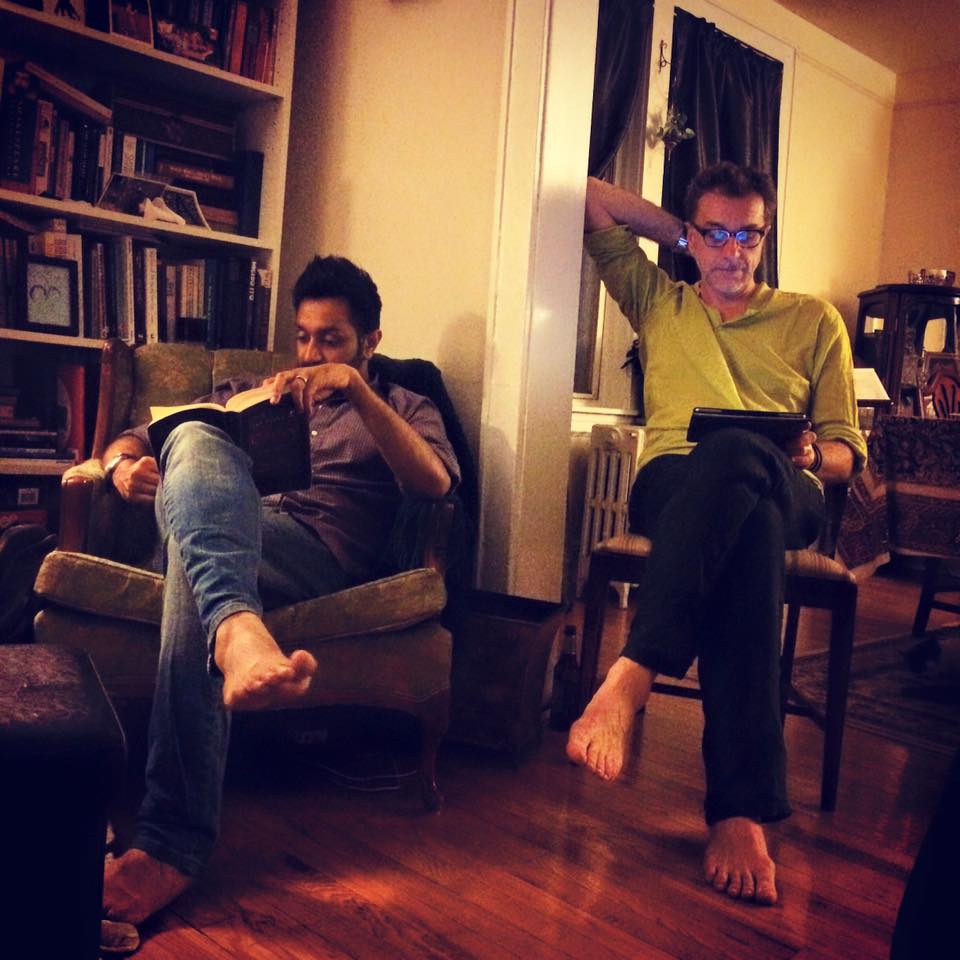
Once directors were cleared to travel, the question of where they might stay while in New York City arose. Often directors would be housed in Juilliard dormitories mere blocks from the Lincoln Center campus. Those rooms did not come free, though, and Anne would work tirelessly in the three or four months between accepting her Lab class and the start of the session to ensure that participants coming from far afield had all the necessary visas and lodging. This involved fundraising, in which Gersten and then-development director, current executive director of development and planning, Hattie Jutagir, were instrumental. “I worked off a 30-page spreadsheet of funding sources,” Anne recalled.
In The Art of Dramaturgy, Anne explains a lot of her thinking behind the program: “I always need to keep the Lab diverse—in every sense of the word: geographically, ethnically, artistically, and in terms of traditions of theatre. I have deliberately accepted more women than men in every Lab since 1995. I see the Lab as an agent of change.”
She also thought of the Lab’s international focus as in keeping with traditions in other mediums, such as film or music. It is not uncommon for a filmmaker to have international collaborators: the American director Steven Spielberg working with the Polish cinematographer Janusz Kamiński, for example, or Taiwanese director Ang Lee working with Argentine composer Gustavo Santaolalla. A global focus was also the natural consequence of other NYC programs, from the Lincoln Center Festival to Brooklyn Academy of Music’s New Wave Festival. These programs had already formed channels of exchange with established guest artists from around the world: Richard Eyre, Toni Servillo, Duma Ndlova, Jacques Lasalle, Lev Dodin, Shi-Zheng Chen.
“I ask directors to bring in their own traditions—what they know how to do, who they have worked and studied with—and share all of it with the others,” Anne writes. “With this level of diversity, we always joke that when someone mentions an artist’s name or specific technique or play, one-third of the lab thinks that’s a theatrical ideal, one-third has never heard of it, and everyone else is somewhere in between. But by the end of the Lab, it’s all known.
“The Lab is for directors who want to change and grow and is the opposite of a showcase or tryout,” she continues. “No one’s career is advanced by attending. We encourage directors to try things they have not done before. Our goal is to open the field to different traditions and practices and allow the directors to create worldwide connections.”
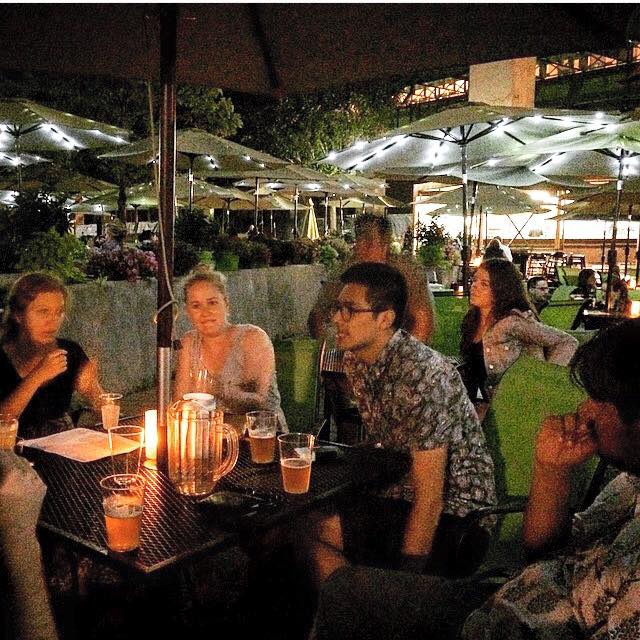
In my experience, more than any guest artist, seminar, or conversation topic, I valued the time spent with my cohort, my peers. We laughed a lot. We argued even more. We circumnavigated language barriers. Those three weeks reminded me that art is only as good as the people you make it with. Bonus: The friends I made then have given me reasons to visit a good many parts of the world.
Many alumni have enjoyed the experience so much that they wanted to reapply for subsequent sessions. A rule was established that Lab participants were allowed to apply to return only once, and only for the year immediately following their first experience. But Lab members found other ways to incorporate the program into their lives and practices. Anthony Runfola, a 1998 Lab alumnus, created “The ListServe,” an online resource for past Lab members to share information with the entirety of the alumni network. Over time the ListServe has served as a platform for sharing work, job opportunities, and real estate offerings or requests. With this resource, directors from around the world have been able to secure affordable or free rooms while in New York for the Lab. According to Anne, this community has been indispensable in assisting visiting directors with housing because they appreciate how special the Lab experience is.
One aspect of the Lab I found particularly eye-opening was what a wide range of duties and descriptions the role of “director” encompassed. Many of us were coming up as assistant directors in and around New York City, while others taught high school drama. Some held administrative positions at institutions, and others were interdisciplinary artists who also wrote and performed what they created. One of our group was a professional chef hoping to join his love of theatre and cooking. Alums from every year have gone on to varied worthy endeavors. And a number have come to run theatres around the country.
Sarah Rasmussen (’03 and ’04) is now artistic director of the McCarter Theatre Center in Princeton, N.J. She reminisced about how experiences in the Lab have stayed with her throughout her career.
“I still remember a cool design idea Braden had for The Seagull,” she said, referring to Braden Abraham, a Lab colleague who is artistic director of Seattle Rep (he recently announced he’ll move on to lead Writers Theatre). “We didn’t know it then, in our early 20s, but we were beginning conversations that are simply continuing as our generation takes the helm of major theatres.”
Another memento has taken on unexpected meaning. “I also still have a script from The Tempest that Emily Mann did with Blair Brown—they came and talked to us about it, and the script says ‘LCT Director’s Lab,’” Rasmussen said. She has that script in her office at the McCarter, where she succeeded Mann as artistic director in 2020. “Those connections still catch me and feel deeply meaningful. I’m grateful that we work in a profession where knowledge and ideas are sparked generation to generation, artist to artist.”
Yury Urnov (’09) is one of three current artistic directors of the Wilma Theater in Philadelphia. “One of the relatively new things we practice at the Wilma is shared leadership,” Urnov said “The Lab helped me understand that collaborative work between directors isn’t impossible.” He shares his position with Morgan Green (’13) and James Ijames.
Several alumni have gone a step further and started sister labs in cities across the country and around the world based on the program at Lincoln Center Theater. Ernest Figueroa (’98), Nick D’Abruzzo (’99), Olivia Honnegger (’99), Kappy Kilburn (’00), and Andrew Sachs (’98) created Directors Lab West, which assembles between 40 and 50 directors and choreographers for an eight-day-long intensive in Los Angeles. Figueroa explained to me that in his two years attending the Lab (he returned in ’99 as a presenter), directors split into groups and attended various events throughout the campus—except for one week in his second year when the group attended events collectively. That idea, of everyone sharing everything together, is the basis for how Directors Lab West operates.
Alums Elizabeth Margolius (’04 and ’05) and Karin Shook (’05) started Directors Lab Chicago in 2005 to offer space to “meet, work, share ideas, and socialize in Chicago.”
Evan Tsitsias, Esther Jun and Elif Işıközlü met during the 2010 Lab. Recalled Tsitsias, “We were so impacted by that experience, we wanted to share it with the Canadian arts community. So, with the help of Anne, we created Directors Lab North in Toronto.” Directors Lab North is now in its 13th year. Tsitsias called the Lab “a magical alchemy of people and practices, both past and present, bouncing off one another to create something almost spiritual. Your time there resonates in unexpected ways for the rest of your artistic life.”
Directors Lab Mediterranean follows a similar model, welcoming directors from across the globe and tailoring its content to the experience and interests of the participating directors. It is smaller in scale (20 directors for nine days), and, unlike Lincoln Center Theater, spans an entire geographical region. “It’s important to us that it continues to rotate through the Mediterranean cities,” said Sahar Assaf (’14), founding member and current artistic director of Golden Thread Productions in San Francisco. “We started in Beirut in 2019, moved online in 2020, went to Barcelona in 2021, and this year we are back in Beirut. The steering committee has directors from Lebanon, Spain, Italy, Jordan, and Greece. One of the reasons we created this is because we all feel that there’s a lack of opportunities for directors to engage with one another in the Mediterranean and with the theatre culture and traditions of the region.”
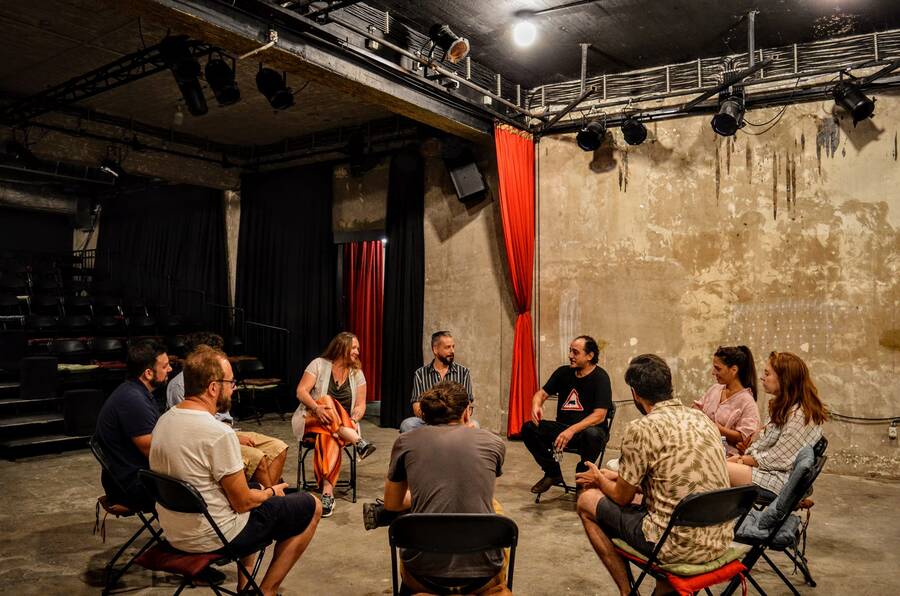
So why does a program that has proven its success and popularity all over the world suddenly stop? One short answer is COVID. In 2020 it would have been impossible for the Lab to happen in New York City, as our shutdown was still firmly in place. But the end of the lab as we knew it had already begun in 2017, upon the inauguration of Donald Trump. Since she began admitting international directors, Anne had developed communications channels with State Department employees in embassies all over the world. While Anne was aiding many directors in finding housing, securing funds for travel, etc., she was in close contact with the embassies, ensuring that the directors would be able to exit and reenter their countries. This work, on top of her responsibilities as dramaturg for LCT productions, took a considerable amount of time every year between March and June.
On Dec. 23, 2016, Trump’s transition staff mandated that all politically appointed ambassadors, without exception, leave their overseas posts by Inauguration Day 2017, breaking with the practice of granting grace periods of weeks or even months to those needing to plan for new places to live or new schools for their children. This move meant that many countries could be without envoys for months as new appointees went through Senate confirmation procedures. This resulted in Anne losing contact with her main foreign allies in securing the ability for directors to attend the Lab. International directors faced near impossible challenges in the process of applying for and securing visas, including limited embassy operating hours and difficulties in traveling great distances to embassies. The times had changed, and Anne then made the difficult decision to sunset the program on her own terms.
The seeming end of the Lincoln Center Theater Directors Lab is often spoken of in the same breath as other bygone development opportunities primarily for playwrights, such as The Lark and Sundance Theatre Program. But in the U.S., there are far fewer development opportunities for early and middle career directors than there are for playwrights, and the loss of the Lab, if it is indeed permanent, will leave a crater in its absence. Opportunities for experimentation, exploration, and failure are integral to all of our processes—especially in a field where the end result is being sold in tickets. We need the time and space to take risks.
It’s possible that all is not lost. Reached by email, Lincoln Center Theater artistic director Andre Bishop called the Lab “a program that made all of us at LCT very proud,” adding that, though the Lab is closed for now, “It is not the end. We are currently rethinking and hoping to bring a new version of it back in future years.”
In the meantime, I asked Ernest Figueroa if there are any tenets from the Lab that he has consistently applied to his work as a creative artist, arts administrator, and consultant. “Be open-minded,” he said. “Anne wanted to bring people together. She referred to this often as ‘sensibility.’ She referenced uptown directors and downtown directors. In New York, that means something very specific—a different sensibility. The purpose was to get all those downtown and uptown people talking so they could get something from each other. A new insight. When we started doing Directors Lab West, we wanted to get diverse voices in a room so that you can glean all that information and put that in your tool kit.”
There is clearly a demand for this exchange of perspective. Alumni think fondly of the sessions with master artists that inspired them, and the conversations with their fellow Lab members, both on the Lincoln Center campus and in bars, in restaurants, and on rooftops across New York City. Anne often jokes that the whole project might have been easier if she had just opened a bar. In my conversations with various Lab alumni, I was amused to learn that many of us had skipped sessions during the day to picnic together in Central Park. While we all thought we were being naughty, we were really playing into Anne’s master plan, which was simply to get us together.
Yury Urnov told me, “Information in theatre spreads slowly—one needs to actually meet people in person and witness the work. The exchange of schooling, methodology, and ideas enriched me and showed me new creative opportunities.”
Pam MacKinnon (’97 and ’98), artistic director of American Conservatory Theater in San Francisco and a Tony-winning director, added: “I do think those fundamentals—people sharing space and time—are core to what we make. I feel out of practice myself, and know others do too. I hope ACT can make artists feel that they can take risks and feel good about developing work and dreaming beyond what we expect. I miss that about the Lab.”
Anne always referred to us, the 1,600 or so directors who participated in the Lab over its 25 years, as the “future of the American Theatre.” And while she has a great appreciation of theatre traditions past and present, her great gift has been her investment in the future of the form. She said to me that she hopes the Lincoln Center Theater Directors Lab proves to be a “model of multiplicity that will be used cheaply and easily by many organizations.” An institution must host, and artists must participate (the Lab never charged nor remunerated directors for their participation). That is the bottom line. As Anne said to each incoming Lab on the first day:
“Each of you will have a different journey. You will see and participate in things that will be inspirational and life-changing and things that you will find idiotic and repulsive. These will be different for each of you. On your individual journey through the Lab, you will find fellow comrades who agree with your assessment about what you are seeing and doing and these people will become your friends.”
Gabriel Vega Weissman (he/him) is a director and playwright based in New York City.

